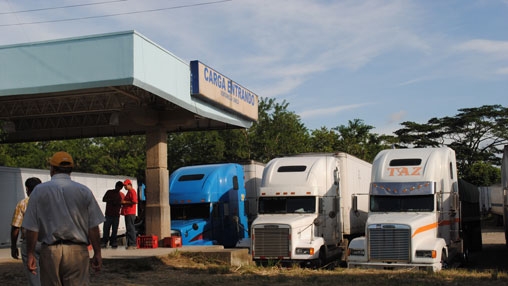Why is it more expensive shipping tomatoes from San Jose, Costa Rica, to Managua in Nicaragua than it is to San Jose, California, which is 10 times the distance?
According to Google, the distance between the Costa Rican capital and Managua is 430 kilometers, whereas 5,400 kilometers separate San Jose from the Californian city. According to World Bank figures, the cost of transport in Latin America and the Caribbean is between two and four times higher than that in OECD countries.
Transporting tomatoes from Costa Rica to neighboring Nicaragua should be as easy as moving the hundreds of tons of this fruit that are shipped from Spain to France each week. But the reality is very different.
The case of exporting tomatoes from Costa Rica to Nicaragua clearly illustrates the logistical challenges facing Central American countries to improve their trade competitiveness. Costa Rica produces over 60,000 metric tons of tomatoes annually. While domestic consumption is high, a large share of this production is shipped to its northern neighbor.
But transporting Costa Rican tomatoes to Nicaragua often entails expensive logistical operations. For large tomato producers, transport and customs clearance expenses can represent more than 30% of the final cost of their exports. These expenses are even higher for small-scale tomato growers, exceeding 50% of the final cost.
Efforts must focus on shortening distances in Central America
“For a region that has advanced so much in free trade [by unifying external tariffs and signing agreements such as the DR-CAFTA, for example], internal trade still has a long way to go,” said Hasan Tuluy, Regional Vice President for Latin America and the Caribbean.
Tuluy considers that what is holding back the countries in the region, especially in Central America, is what he calls "battle of productivity". Central America countries "are small markets and therefore they have to be open economies and for them to be open they need to be competitive; for them to be competitive they need much more productivity. And that comes through much better education of quality, much better infrastructure and logistics and these factors are the ones that create growth and the opportunities needed to distribute more equitably the wealth".
According to Tuluy, this issue was a key incentive for the logistics meeting in Central America - The road to competitiveness - celebrated in San Jose, Costa Rica on February 8. The event was sponsored by the World Bank, INCAE and the Costa Rican Ministry of Foreign Trade.
Transport is largely responsible for the high and varied costs: for large-scale producers, transporting tomatoes from their farms to the borders represents 7% of the sales price whereas for small-hold farmers, transport costs account for 23%, in other words, three times more than for larger producers. The poor condition of secondary roads, the long distances and production scales largely explain this difference.
Another key factor driving up the logistics cost of tomatoes is processing through customs. Together, payment for customs services in both countries, and losses due to long waiting times, represent 10% of the final sales cost. On a busy day at the Peñas Blancas border crossing between Costa Rica and Nicaragua, it may take up to 10 hours for a truck transporting tomatoes to its final destination. This is in part due to the fact that phytosantiary controls for perishable products are implemented on both sides of the border.
“Although bottlenecks affect costs in all segments of the logistics chain, border procedures and road quality have a major impact on competitiveness in Central America, particularly on small-hold farmers,” said Felipe Jaramillo, World Bank Director for Central America.

